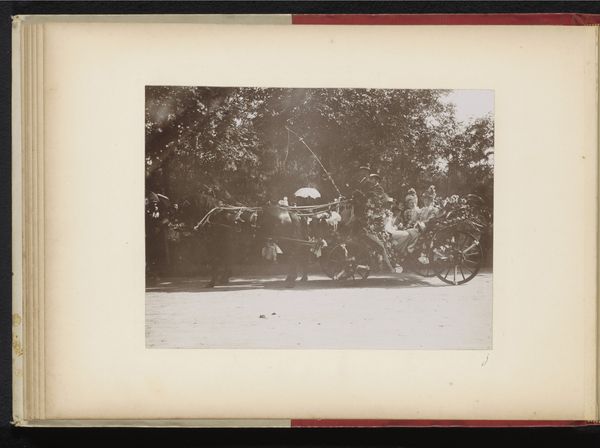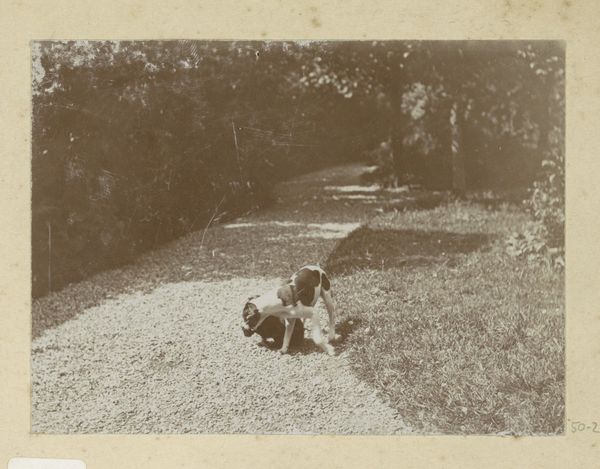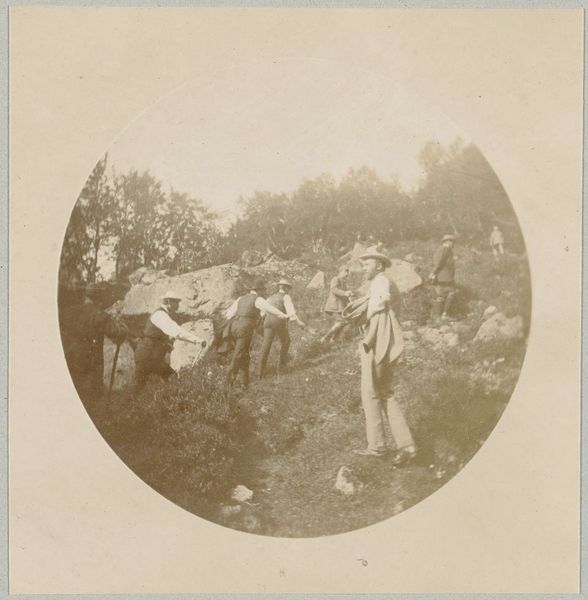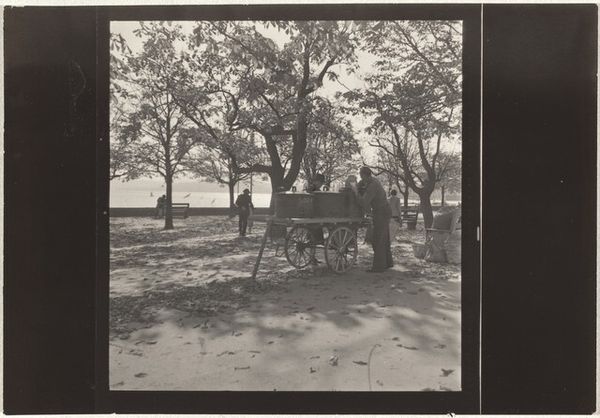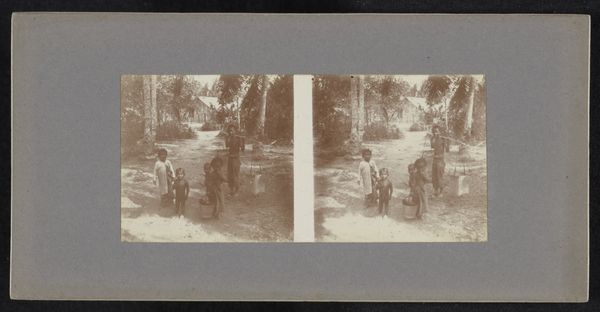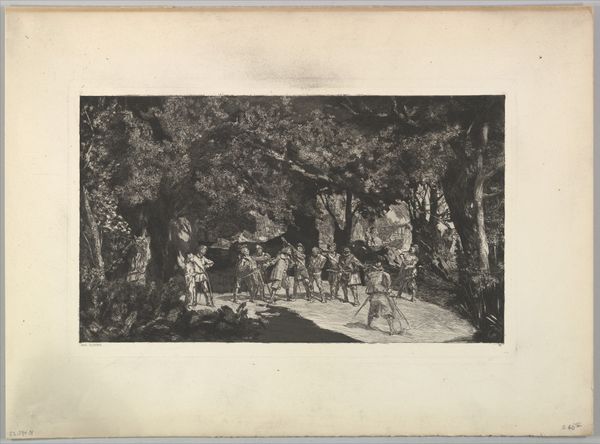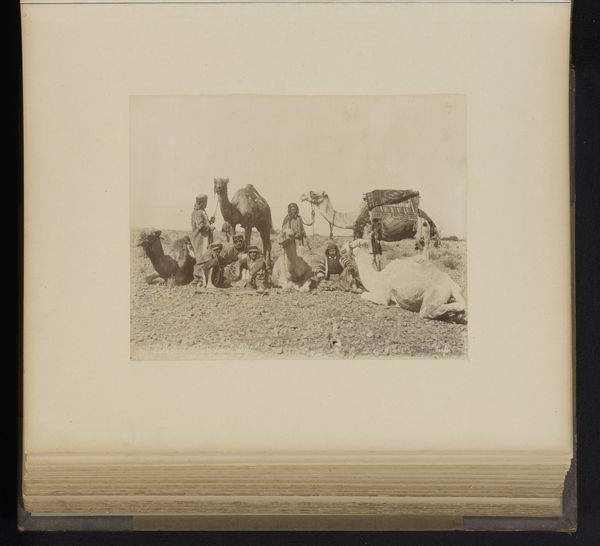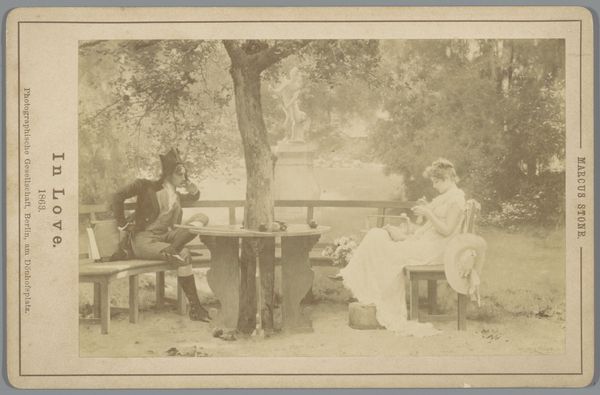
photography, gelatin-silver-print
#
portrait
#
african-art
#
photography
#
orientalism
#
gelatin-silver-print
#
genre-painting
Dimensions: height 83 mm, width 110 mm
Copyright: Rijks Museum: Open Domain
Editor: Here we have "Kaartspelende mannen in het immigrantendepot" – "Men Playing Cards in the Immigrant Depot" – taken between 1903 and 1910 by Hendrik Doijer. It's a gelatin silver print, and there's a certain stillness despite the activity, an almost staged quality. What draws your eye to it? Curator: This photograph prompts an immediate question about labor. A colonial officer is positioned in the background—observe the stark contrast between his immaculate uniform and the men's bare skin and minimal garments. What labour system supported that contrast, materially? The photograph itself, as a gelatin silver print, has a production process tied to specific economic conditions. Who mined the silver? Who manufactured the photographic paper? How did this photographic technology impact colonial administrative practices? Editor: That's a really interesting way to look at it, considering the whole process. I was focusing more on the subjects and their poses, but you are right; the production is telling. The clean white uniform versus what the men wear; it's all intertwined. Curator: Exactly. Think about what this scene represented: Leisure in a place of transit. Is it really leisure, or something else entirely? The image may be classified as a "genre painting", which in turn raises a host of other questions tied to representation and social stratification in colonies. Editor: It almost makes you think if "genre painting" isn't perhaps too gentle of a term when dealing with these settings. Curator: Precisely. By focusing on the material realities surrounding the creation and the subjects of the photo, we begin to unpack these layered representations. Editor: I never considered the literal material involved as directly related, and so influential, but thinking about labor really clarifies it for me. Curator: It’s about locating the artwork within systems of production, distribution, and consumption—understanding the hands that shaped it, in more ways than one.
Comments
No comments
Be the first to comment and join the conversation on the ultimate creative platform.

